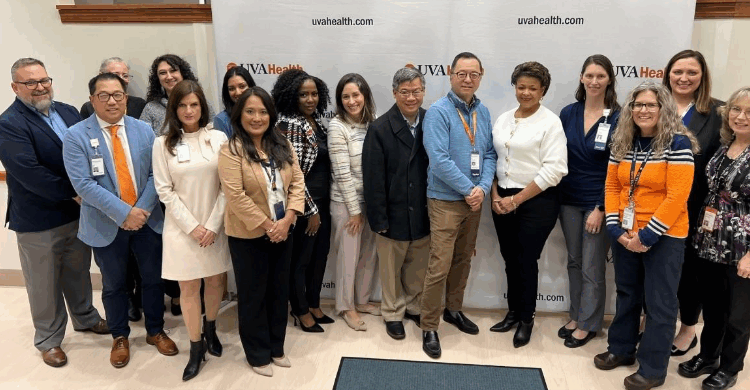
To prevent accidental needlestick injuries that can spread HIV, hepatitis and other bloodborne diseases, a group at the University of Virginia School of Medicine is partnering with the American Nurses Association (ANA) to target what they call “one of the most serious occupational risks healthcare workers face.”
UVA’s International Healthcare Worker Safety Center , in collaboration with ANA, has drawn up a “roadmap” to a safer future for America’s healthcare workers. The eight-page call to action, which outlines steps to advance the prevention of accidental needlesticks and other “sharps” injuries, has won the backing of 18 healthcare groups across the country.
The document provides a “snapshot of where we are now and where further work is needed in order to continue making progress,” says Janine C. Jagger, MPH, PhD, the center’s founder and director.
Reducing infection risk
The center earlier this year announced research showing that needlestick injuries had been reduced significantly by the federal Needlestick Safety and Prevention Act, which went into effect in 2001 after concerted efforts by many stakeholders, including the UVA center and the ANA. But the decline in the number of needlesticks has leveled off, and too many preventable injuries continue to occur. “In an increasingly complex and changing healthcare environment, we need a renewed commitment to achieve further progress,” the authors write.
Steps to safety
The plan’s recommended actions include:
Improving sharps safety in surgical settings Reducing exposure risk in non-hospital healthcare environments Involving healthcare workers in safety device selection Improving the range and design of available safety devices Enhancing worker education and training.
The full consensus statement can be viewed at the center’s website, healthsystem.virginia.edu/internet/safetycenter/.
Renewed commitment to safer medical devices
For more than two decades, UVA’s International Healthcare Worker Safety Center has played a critical role in advocating for healthcare worker protections from needlesticks and others potentially life-threatening occupational exposures to blood. The center provided evidence-based data to support the Needlestick Safety and Prevention Act, and Jagger has long been a key advocate for engineering safer medical devices.
“While we celebrate the progress we have made,” the center’s new action plan concludes, “we must acknowledge the gaps that exist and redouble our efforts to ensure that all healthcare workers, regardless of the setting in which they practice or the procedures they perform, are offered the same level of protection from sharps injuries and exposures to bloodborne pathogens.”
List of organizations endorsing the Consensus Statement on Sharps Safety:
Academy of Medical-Surgical Nurses Academy of Neonatal Nursing AdvaMed (medical device industry trade association) American Academy of Ambulatory Care Nursing American Association of Critical-Care Nurses American Association of Nurse Anesthetists American Association of Occupational Health Nurses American Nurses Association Association of Occupational Health Professionals in Healthcare Association of peri-Operative Registered Nurses Association of Rehabilitation Nurses Center for Phlebotomy Education Infusion Nurses Society International Healthcare Worker Safety Center, University of Virginia National Association of Neonatal Nurses Nurses Organization of Veterans Affairs Organization for Safety, Asepsis and Prevention Premier healthcare alliance Wound, Ostomy, Continence Nurses Society


